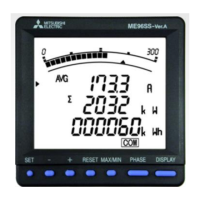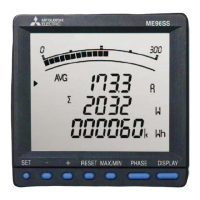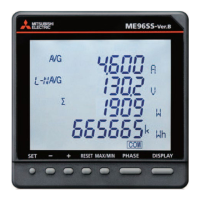Why is the back light is not lit on Mitsubishi Electric ME96SSEA-MB Measuring Instruments?
- TTiffany RiveraSep 7, 2025
The backlight may be set to auto off (Auto). If it turns on when you press a button, this is likely the case. When auto off is enabled, it turns off automatically after 5 minutes. You can either continue using it as is or change the setting to HoLd to keep it on continuously.




